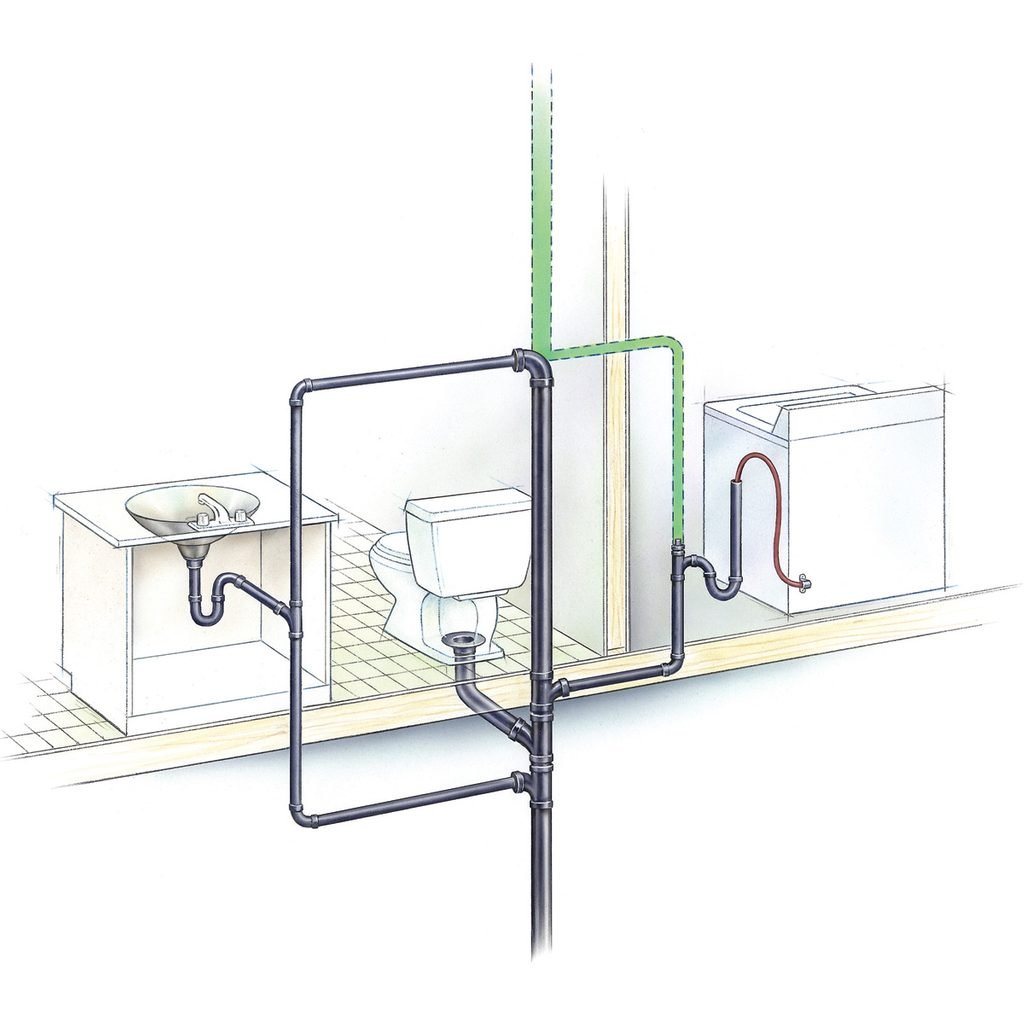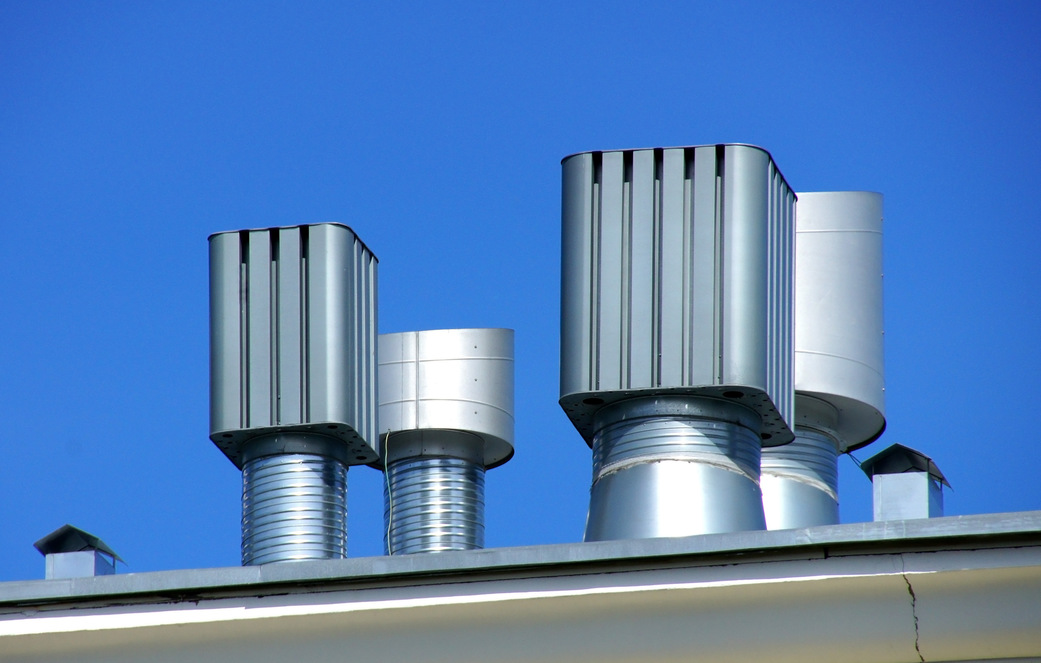What are your concepts on What Is A Plumbing Vent & How Do They Work??

Appropriate air flow in pipes systems is frequently neglected, yet it is critical for maintaining the capability and security of your home's pipes. Air flow aids regulate atmospheric pressure, avoid the accumulation of harmful gases, and guarantee the efficient removal of waste. In this guide, we will certainly discover the significance of appropriate pipes air flow, how it functions, and the advantages it gives your pipes system.
How Air Flow Functions in Pipes Solutions
Atmospheric Pressure Policy
Proper ventilation preserves balanced air pressure within the plumbing system. When water moves with pipelines, it displaces air. Without adequate ventilation, this variation can create adverse stress, leading to slow down drains pipes or siphoning of water from traps, which can create unpleasant odors to leak right into the home.
Avoiding Drain Gas Build-up
One of the most important features of plumbing vents is to stop sewer gases, such as methane and hydrogen sulfide, from accumulating within the home. These gases can present serious health and wellness dangers and are very flammable. Vent pipelines allow these gases to leave securely outside.
Helping in Waste Elimination
Ventilation helps in the efficient elimination of wastewater by avoiding airlocks in the drainage system. When air can stream easily with the vents, it allows water and waste to move smoothly through the pipelines, minimizing the danger of obstructions and back-ups.
Benefits of Correct Air Flow
Improved System Performance
Correctly aerated pipes systems operate much more efficiently, with less blockages, faster draining, and less strain on the pipes. This performance expands the lifespan of the pipes system.
Improved Air Top Quality
By preventing sewage system gases from entering your home, appropriate ventilation contributes to better indoor air high quality, making your living setting healthier and a lot more comfy.
Preventing Water Damage
Ample air flow assists avoid water from being siphoned out of traps, which can lead to sewer gases getting in the home and creating water damages with time.
Actions to Make Certain Proper Air Flow
Consulting Plumbing Codes
Constantly seek advice from regional pipes codes when developing or changing your pipes system. These codes provide the required guidelines for correct airing vent and guarantee your system satisfies safety and security standards.
Routine Evaluation and Maintenance
Normal examinations can aid recognize potential air flow issues before they come to be significant problems. Upkeep tasks, such as cleansing vent pipes and checking for blockages, are essential for maintaining the system in good working order.
Expert Installment
For new installations or significant modifications, it's a good idea to hire a specialist plumbing technician. They have the experience to ensure the air flow system is properly created and installed according to code.
Understanding Ventilation in Pipes
Air flow in plumbing describes the network of pipelines that allow air to flow via the water drainage system. These vents serve several objectives, including managing atmospheric pressure within the pipelines, stopping sewer gases from getting in the home, and aiding in the smooth flow of wastewater.
Types of Pipes Vents
Main Stack Vent
The primary stack vent, likewise called the air vent pile, is the key vent in a plumbing system. It expands from the main drain line up via the roofing, enabling gases to get away and fresh air to enter the system.
Branch Vent
Branch vents link to the main pile vent and serve private components, such as sinks, bathrooms, and showers. These vents make sure that each fixture has sufficient air flow to operate effectively.
Air Admittance Valve (AAV).
An Air Admission Valve (AAV) is a one-way shutoff that permits air to go into the pipes system without the requirement for a traditional air vent pipe extending with the roofing system. AAVs are typically made use of in restorations or areas where installing a standard air vent is impractical.
Indicators of Poor Air Flow in Plumbing.
Slow Draining Fixtures.
If your sinks, bathtubs, or commodes are draining slowly, it could be an indicator of bad air flow. Poor air circulation can create a vacuum impact, making it difficult for water to drain pipes properly.
Gurgling Seems.
Gurgling audios coming from drains are typically an outcome of air being drawn with water catches because of negative pressure in the pipelines. This is a clear sign of insufficient ventilation.
Unpleasant Smells.
Sewer smells inside your home are a red flag that your plumbing system is not correctly aerated. This can indicate that drain gases are not being effectively aired vent outside, leading to possibly dangerous problems.
Typical Ventilation Blunders.
Inadequate Vent Sizing.
Utilizing undersized air vent pipes can lead to bad air circulation and stress imbalances in the system. It's vital to use vents that satisfy the certain requirements of your pipes system.
Improper Vent Placement.
Positioning vents too much from the fixtures they offer can decrease their performance. Appropriate placement guarantees that air can move freely and efficiently with the system.
Ignoring Code Needs.
Building ordinance provide particular guidelines for pipes air flow. Disregarding these codes can lead to a system that stops working to work properly and may result in pricey repair work or carcinogen.
Final thought.
Proper air flow is an important element of any kind of plumbing system, ensuring that it operates effectively and securely. By recognizing the importance of ventilation, recognizing the indicators of bad ventilation, and taking steps to maintain your system, you can avoid costly problems and safeguard your home's air high quality.
What is a Plumbing Vent and it's used for?All plumbing systems in residential and commercials construction have a plumbing vent. It doesn’t just vent unwanted odors from the drainage system to the outside; it actually serves an important purpose by supplying air to the system.
The plumbing drainage system is actually called a drainage, waste and vent (DWV) system. When water flows down the piping, an air supply (vent) is needed to allow the water to flow. Think of the vertical pipe as a drinking straw. If you plug the top end of a straw, liquid won’t drain from it.
The DWV system in your building consists of a series of pipes connected to each fixture; they extend above each fixture, and the system terminates at an open pipe that extends through the roof. This piping allows air into the system and prevents unbalanced pressures in the piping.
?The vent also prevents the system from drawing water out of a trap at the fixture with the characteristic “glug-glug-glug” as the drain gasps for air. Plumbing traps should drain smoothly and never “glug” or gasp for air.
If you have a drain that empties slowly or gurgles as it drains, this may indicate a venting problem. If you flush a toilet and the sink gurgles, there’s definitely a vent problem. It is good idea to have a Plumber check this.
https://www.ameliashomeinspection.com/blog/what-is-a-plumbing-vent-and-its-used-for

Do you really like more info about Essential Plumbing Vent Pipes: Understanding Their Role? Try leaving a remark below. We'd be happy to hear your responses about this write-up. Hoping to see you back again before long. Enjoyed our piece of writing? Please quickly share it. Help another person check it out. We recognize the value of your readership.
Call Us Today